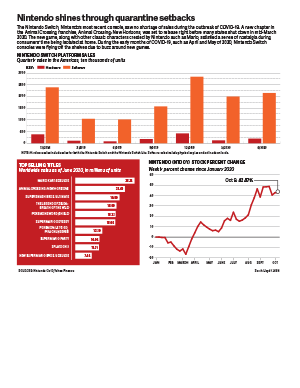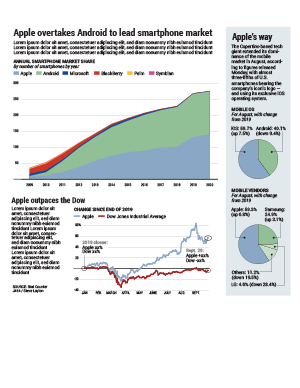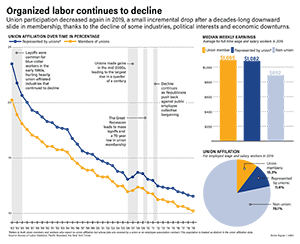I decided to research how Nintendo sales have changed since the outbreak of COVID-19 in the United States. Right as states in the U.S. started shutting down stores and restaurants in mid-March, Nintendo released the newest installment of the Animal Crossing franchise, Animal Crossing: New Horizons. The nostalgic factor of a franchise that has been around since the release of the Nintendo GameCube releasing a new game before a period of isolation caused a lot of hype on social media. Twitter went wild after the game was released on the Nintendo Switch, and provided something wholesome and fun to do during uncertain and scary times.
As I was looking for data regarding sales, the Nintendo website actually had a lot of data that I was looking for. They had sales data from up until June of this year, which is a pretty decent dataset. However, I wanted to include more data with a wider range, so I found the stock information for Nintendo on Yahoo Finance. That gave a great overview of how the company was doing. Even though games and consoles were supposedly flying off the shelves in March, the stock fell that month and rose up again in April. I wanted to add a graphic that didn’t rely so much on inferring from numbers, so I found information from Nintendo’s website on the top-selling Switch games since the console had been released. I thought it was interesting to see which games were the most popular. I was expecting Animal Crossing: New Horizons to top the list, but it came up in second place.
I stuck with a simple color scheme for this graphic, using a bright red that resembles the logo of Nintendo, and an orange shade to represent the software sales (because the eShop logo is white and orange). I created a new stylesheet for this project and chose a new typeface: Adelle Sans. I had only used Roboto for infographics until now, but I’m happy to choose a new typeface. I like Adelle Sans because it’s really rounded, easy to read, and had lots of variations, including a condensed version.
Overall, I’m pretty satisfied with my graphic. I think the strongest chart in the graphic is the stock changes because it easily shows how Nintendo was affected during the outbreak of COVID-19. However, my favorite chart is the list of the top games on the Switch. I am, really happy with how it turned out, and I feel like it’s a creative way to list the games and their corresponding sales numbers. In the future, I hope to be more creative and think outside the box when it comes to infographics. I tend to stick to the norm because it’s something new to me, but I’m hoping to make something more my style (instead of a basic style) in the next projects.





